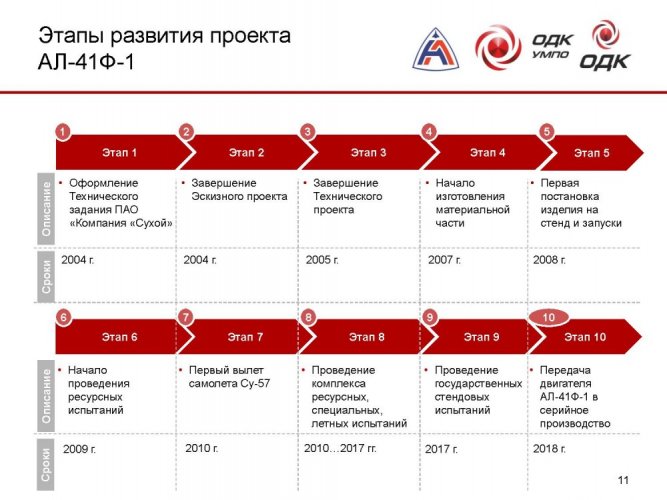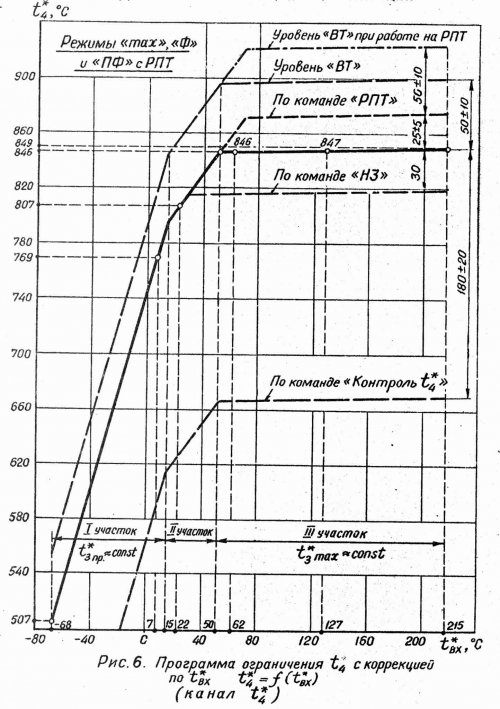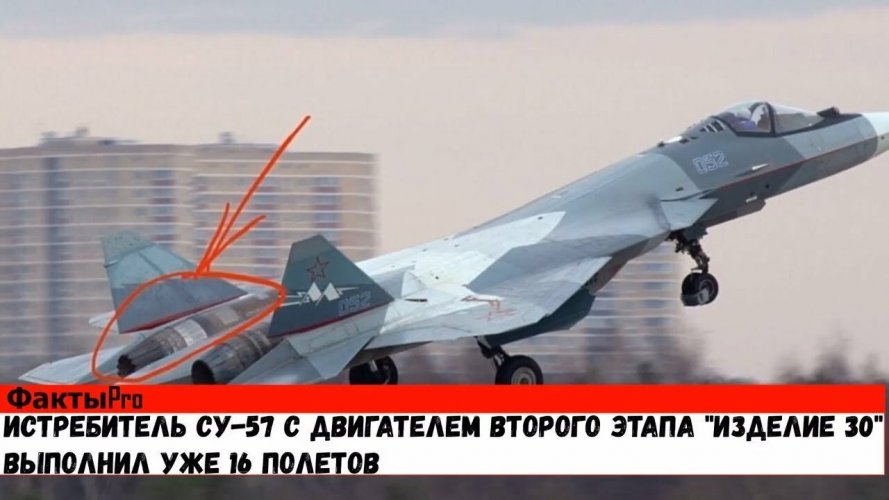is it really that hard to posts sources here? Christ
View attachment 768018
Nice and tnx....
So what they have for now? No more than 30 operational Su-57's with the first stage engine AL-41F-1.
That means they have almost 50 more fighters left to produce and where is the rush with the second stage engine? One more thing, did it occur to us that technically, technologically and structurally, the engine (and maybe even air intake? ) of the second stage might be completely different from the engine of the first stage? I've found some data that Izd 30's compressor is even 30-35cm wider then that of AL-31F where AL-41F-1's compressor is 27cm wider ( 932mm vs 905mm).
If I may, I will repeat some details about Izdeliye 30 from his 'father' Ye.Marchukov ( article from 2019):
''Specific weight in the aviation is the ratio of the engine mass to its full thrust. For the promising "Product 30" this figure is less than 0.1, i.e. the engine is capable of producing more than 10 times more thrust than it weighs. Specific thrust is the ratio of the full thrust to the engine's air consumption.''
Of course ,here we have a case of the max static thrust (not dynamic thrust) and I must note that even AL-41F-1 has that ratio ,more then 10:1. Again,that engine is 150kg lighter then AL-31F .So we have: 1530kg-150kg=1380kg of the dry weight where the max static thrust on the Full AB mode is 15000kgf.
''In the second stage engine for the Su-57, the developers applied a number of new design approaches and technologies, thanks to which the “Product 30” in terms of specific fuel consumption is approximately equal to the AL-31F dual-stream engine (670 grams per kilogram-force per hour in cruising mode), but surpasses it in terms of specific thrust.''
Specific fuel consumption is in opposition to specific thrust. The best fuel consumption is achieved on civil twin-circuit engines, but they have the lowest specific thrust due to the high bypass ratio. On the contrary, single-circuit engines have high specific thrust, but also high consumption.
“Due to the use of new designs and technologies in Product 30, the specific consumption remained at the same level, but the specific thrust increased,” said Marchukov.
The fifth-generation engine "Product 30" will differ from the AL-41F1 in its increased fuel efficiency and lower life cycle cost. Compared to the fourth-generation engines, the fifth generation has added the ability to cruise supersonic motion - for this, the engine must have a variable bypass ratio. This requirement added another specific parameter - specific fuel consumption at cruising supersonic speed.
The engine should also have significantly lower visibility in the infrared and radio wave range. This is achieved by a special design of the nozzle and
air intake. Another important aspect of the new engine is the reduction in the life cycle cost of the machine - less maintenance costs, longer service life between repairs," Marchukov said about the new power plants.''
Source:
https://nplus1.ru/material/2019/03/06/engines
Now some interesting data about Izd. 30 from famous military pilot Gen. Vladimir Popov. I already posted this but it's good to repeat and to make some comments and analysis.
Article from 2021 :
''According to the analyst's forecast, the second-stage engine will increase the Su-57's cruising speed to approximately Mach 1.5. At the same time, in a commentary to RT, Honored Pilot of Russia Major General Vladimir Popov estimated this figure at almost Mach 2. Little is known about the characteristics of "Product 30". Earlier, on air at Sputnik radio, UEC representative Anton Chechukov reported that, in comparison with the AL-41F1, the thrust of the second-stage engine will be increased to 17.5-19.5 tons. The engine will also feature increased fuel efficiency and a reduced life cycle cost.
In March 2020, an article was published on the website of the journal "Science and Technology" with an analysis of the technical solutions implemented in "Product 30". It reported that the oxygen-free ignition system is installed on modernized injectors that ensure ignition of the fuel immediately after it enters the combustion chamber.
This approach maintains an optimal combustion mode and eliminates the so-called flare - the ejection of a column of fire from the nozzle due to excess fuel in the combustion chamber. The second-stage engine is also equipped with a new nozzle with a thrust vector control function.
The material noted that the electronic digital control system of "Product 30" significantly simplifies the pilot's work and facilitates the engine tuning process. It receives a command from the pilot and then carries it out "taking into account the current parameters and various factors."
Vladimir Popov said that Russian designers have significantly changed the thermodynamic process used in previous generations of jet engines.
"This is due to the special ionization of the air flow, the air-fuel mixture. In the traditional combustion chamber there is an afterburner chamber.''
Note : both AL-41F-1 and AL-41F-1S have so called plasma ignition system for both chambers: the main and the AB chamber.
This was very interesting for me :
"Product 30" will not have an afterburner as such. Instead, it will have a ring system that will create fuel combustion without additional supply via pump systems, which will be more economical. The efficiency of fuel combustion is planned to be increased by 1.2-1.5 times," the expert said.
''Also, as Popov noted, the second stage engine is equipped with a new fuel automation system, which will regulate the flight mode due to thrust. According to his estimates, in the non-afterburning mode, the thrust of "Product 30" will be 1.5 times greater than that of today's engines.
"In addition, the new engine has improved technological and operational characteristics. The testing process is currently underway. Once completed, I think our industry will be able to set up production of the unit.
The design bureau and manufacturing plants work simultaneously, so there shouldn’t be any problems with production,” Popov explained.''
Source:
https://russian.rt.com/russia/article/926444-su-57-dvigatel-izdelie-30
From P. Butowski article ( 2023)
In 2023, the engine was given the designation
AL-51 .
Hm, w/o that ''F'' ( F for Forsirovanny or AB-mode).
Several days after flying tests of the Izd. 30 started ,site 'bpmd' released some data:
According to the manufacturer, the engine "Product 30" has a compression ratio of 6.7, the air consumption is 21-23 kg/s. The temperature of the gases in front of the turbine reaches 1950-2100Kelvin. ( about 1800°C).
В издании AirCosmos была опубликована статья Izdeliye 30 eqiupe le Su-57 , которая интересна взглядов из-за рубежа на испытания нового российского двигателя второго этапа изделие 30 для перспективного истребителя ПАК ФА. Так, в статье…

bmpd.livejournal.com
Many sources like this mentioned that max static thrust on the MP mode is 11000 kgf and max static thrust on the Full AB mode is 18000 kgf.
But those are only 'sources' ,now real question will be, is there AB chamber at all?




